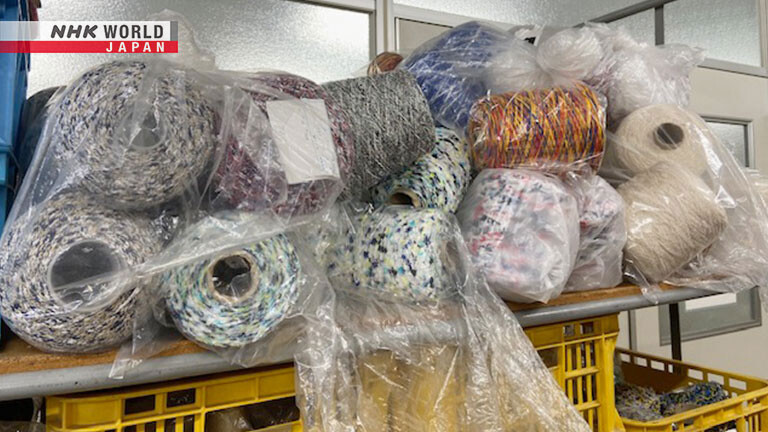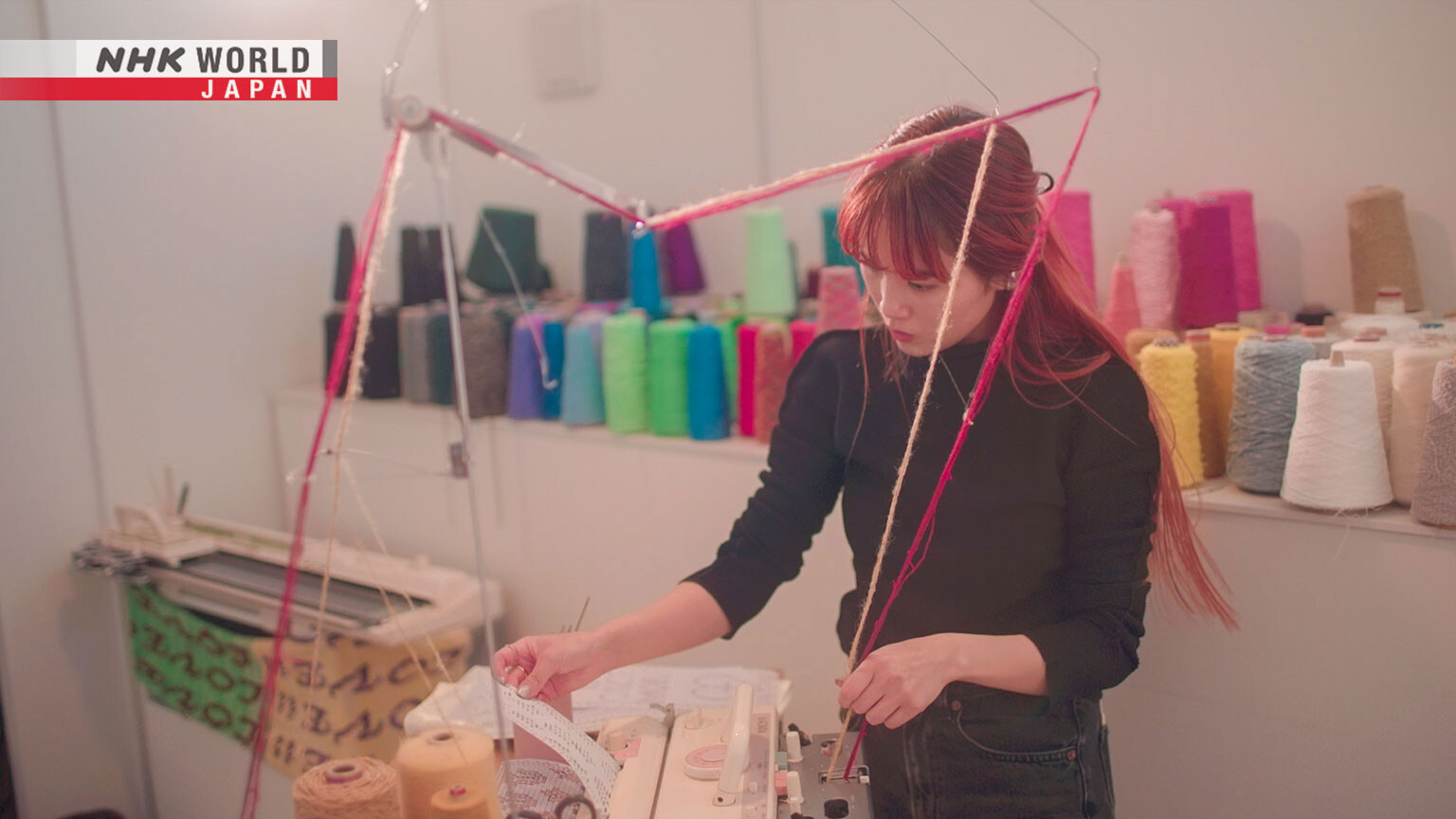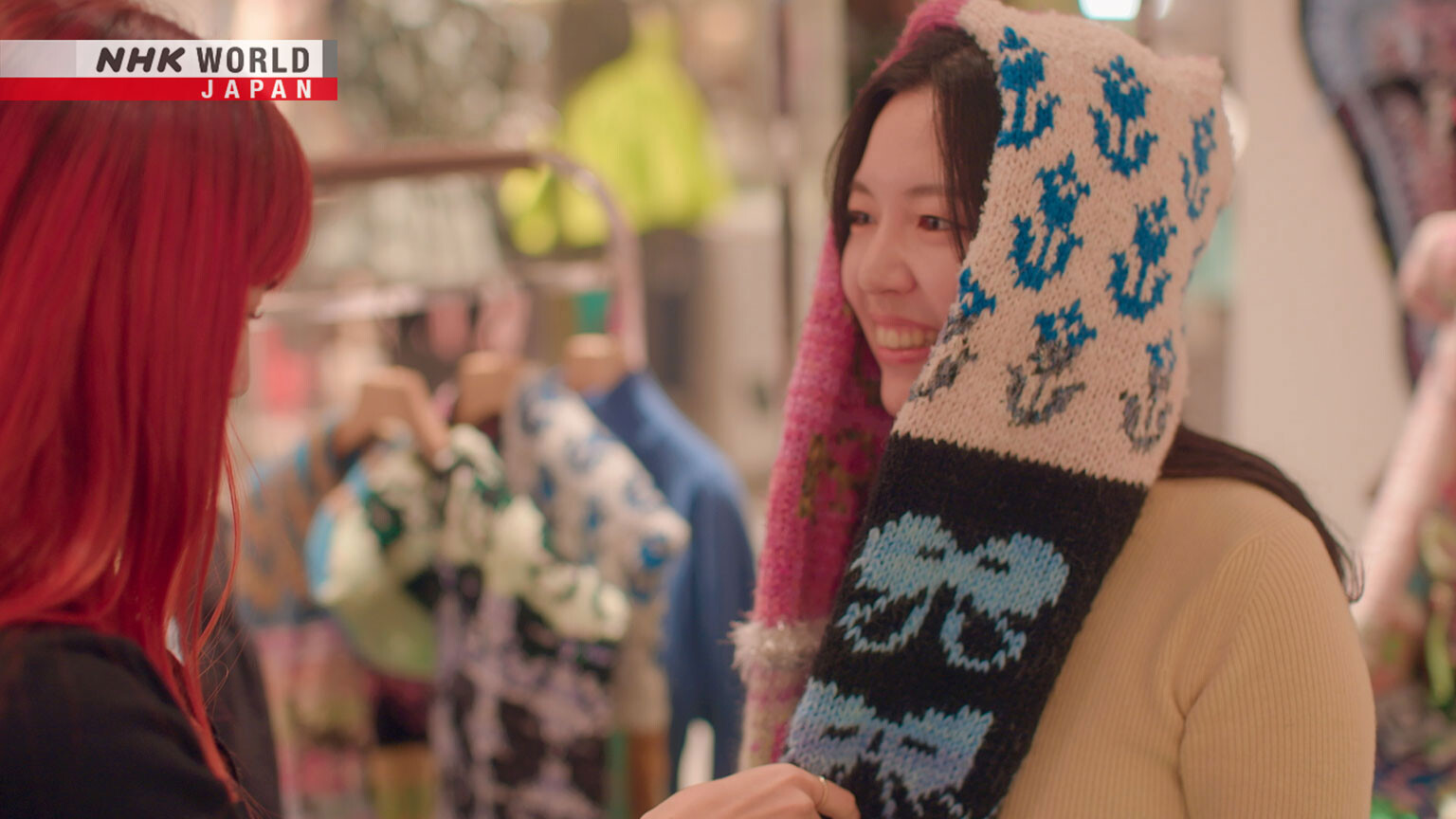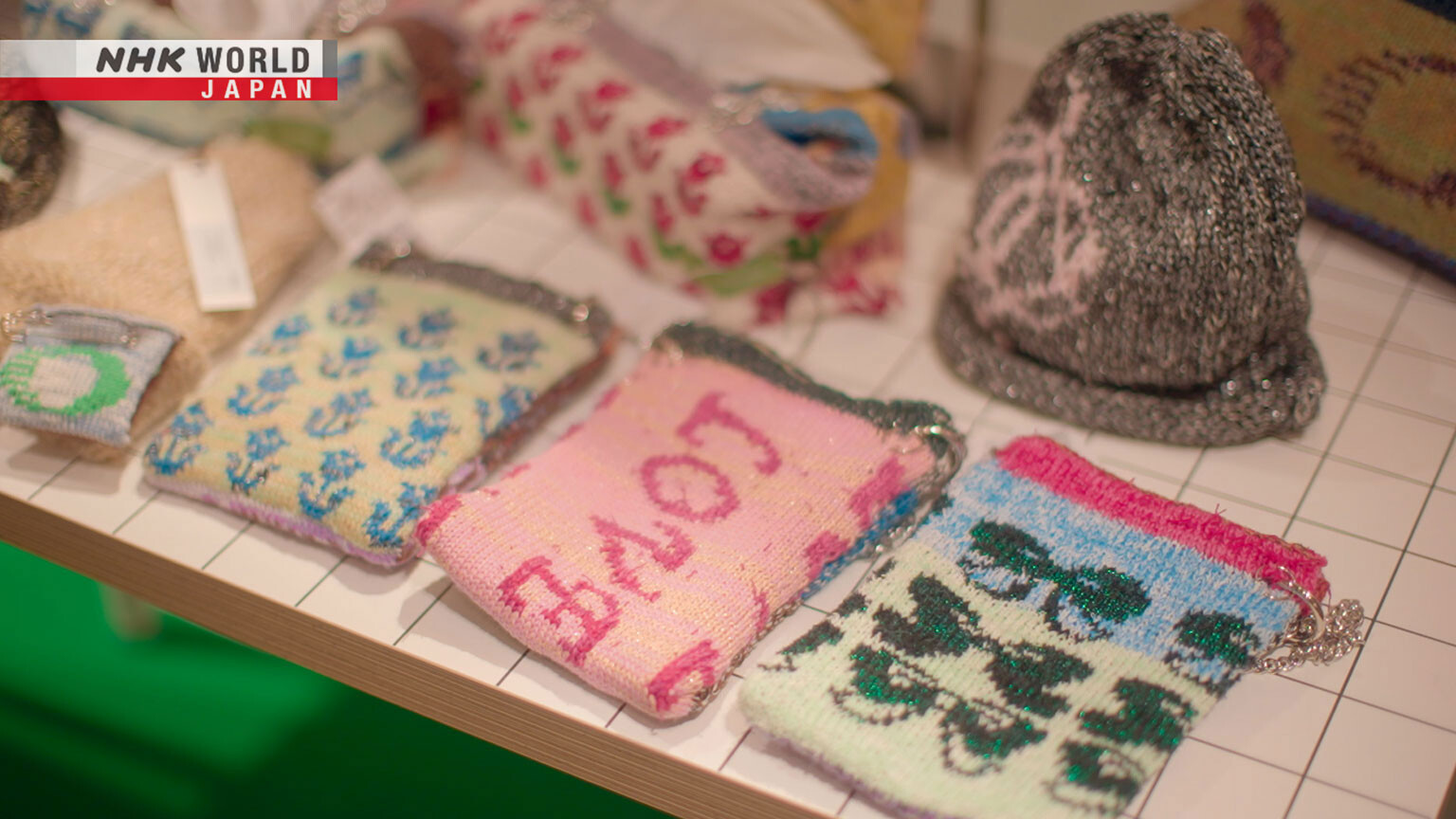Knitting the Future
Maro Kuratani knits scarves and other items with surplus yarn, using threads of varying color and thickness. She says yarn is the ultimate eco-friendly material as reknitting is always an option.




Transcript
Since ancient times, the Japanese have believed that a life force resides in all creations.
Valuing and caring for the things we use, a "Zero Waste Life."
Pointing the way to better living for a new era.
Through blending and other methods, even "useless" yarn can be beautiful.
And I feel that I have a responsibility to help realize that potential.
Setagaya, suburban Tokyo.
A small studio in a residential area.
Here, Maro Kuratani sits alone, knitting a scarf.
As I knit, I envision them bringing happiness to those who wear them.
Ribbons, butterflies, plants and other motifs are knit into the scarves with colorful yarn.
Kuratani's creations have a cute, pop-art sensibility that appeals to young women.
The materials she uses are distinctive.
The room is lined with yarns of varying color and thickness,
all in fact once destined for disposal.
It's mainly surplus yarn from factories. None of them are exactly the same.
I purchase these remainders from manufacturers to use in my work.
Most knitwear is mass produced in textile factories.
But this leads to large quantities of surplus yarn.
Say you have an order for 100 pieces...
Yarn is purchased by the kilo, so it's impossible to buy only what's needed.
There will always be some left over.
Since the color and thread are specified by order, it's hard to find other uses.
At Ando's factory, from the roughly 60,000 pieces of knitwear produced annually,
anywhere from 3 to 400 kilos of yarn go unused.
Five years ago, after learning of Kuratani's efforts, he provided her with some of their excess yarn.
Even in small amounts, eliminating, or rather reducing surplus yarn waste
is a big help to our company.
And if such efforts spread, maybe we could solve the problem for good.
Surplus yarn varies widely in thickness.
The data used for each one is different, so it's not suited to machine production.
But by twining threads together by hand, regardless of the thickness of the yarn,
I can get the size that's needed.
Kuratani is also particular about her tools.
This is a home knitting machine, it doesn't require any electricity.
Way back, maybe every home had one.
They were tools mothers used to knit clothes for their children.
In the 1950s and 60s, there was a craze for such home knitting machines across Japan,
as it was far cheaper to make clothing than to buy it.
However, in modern Japan there's not much use for them, and they're increasingly discarded.
Aware of this, Kuratani searched online and bought one as soon as she found it.
I had only knit by hand before, but a home machine allows for faster production.
Speed is vital for making items to sell, so I thought it would be a useful tool.
The fact that it needs no electricity also makes me feel good using it.
The environmental impact is minimal.
The yarn is wrapped around the needles and knit one row at a time.
By repeating this process, a scarf is created.
Now that I've knit four rows normally, I'll add these weights and continue.
But after a few passes, work comes to a halt.
The yarn is jammed.
I messed up, so I have to undo it.
Even with mistakes, the yarn never goes to waste; one reason Kuratani chose knitting.
Yarn can always be reknit, so it's the ultimate eco-friendly material.
At this pace, the scarf is complete in about half a day.
If I had to make 100 of the same color, then I wouldn't enjoy the work.
I've always loved making things, ever since my student days.
Discovering the appeal of knitting at fashion school,
she found employment as a knitwear designer for an apparel maker.
But mass-production and mass-disposal were the norm in the industry,
and seeing the items she'd designed thrown away was a real shock.
They're not made by pushing a button. They take time and trouble to create.
Knowing they'd end up as trash, I just couldn't be part of it.
This wasn't how I wanted to do it, and so I decided to quit my job.
With that, she set out on her own.
And, instead of new, she'd use surplus yarn for her creations.
She says using such material has a special joy of its own.
Normally, making something yellow, the yarn is all the same shade.
With surplus yarn no two yellows are the same, so it's always a surprise.
You end up with something original. I use this intentionally in my designs.
Once off the machine, the rest is done by hand.
All done.
I'm so happy! It's rewarding.
Even if you see it every day, will it still look just as cute?
I put a lot of thought into that.
As well as scarves, she also knits items like hats, bags and tissue box covers from surplus yarn.
Today she's selling her wares at a department store in central Osaka.
- Maybe like this?
- So cute!
It looks good from every angle.
- It's all discarded material?
- Yes, mostly factory surplus.
- Even this sparkly stuff?
- Yes, everything.
There's the design, but I also like that it's made with surplus yarn.
I love the overall brand concept.
The patterns and use of color are beyond any amateur's ability.
And all using surplus yarn.
In hopes of sharing her love for zero-waste knitting, Kuratani is also offering a workshop.
Now we'll begin knitting from here. We start with one stitch at a time.
It should be like this here.
The workshop also aims to promote the use of the old home knitting machines that are slowly disappearing.
Maybe they had grandma's old one, or one at their parent's house.
But people don't know how to use them, so they end up being thrown away.
This is a chance to prevent that.
- That's good! You've got it!
- I think so.
- All done.
- Thank you!
- You did it! Lovely!
- Thank you!
It's really cute!
Through the joy of knitting, more and more people will use cast-offs and surplus to make things,
reducing overall waste as a result.
This is Kuratani's vision of the future.
I start from the assumption that people want fashionable things.
Customers will be attracted to our products because they are cute,
and through that, naturally expand their environmental awareness.
That's the brand I hope to create.